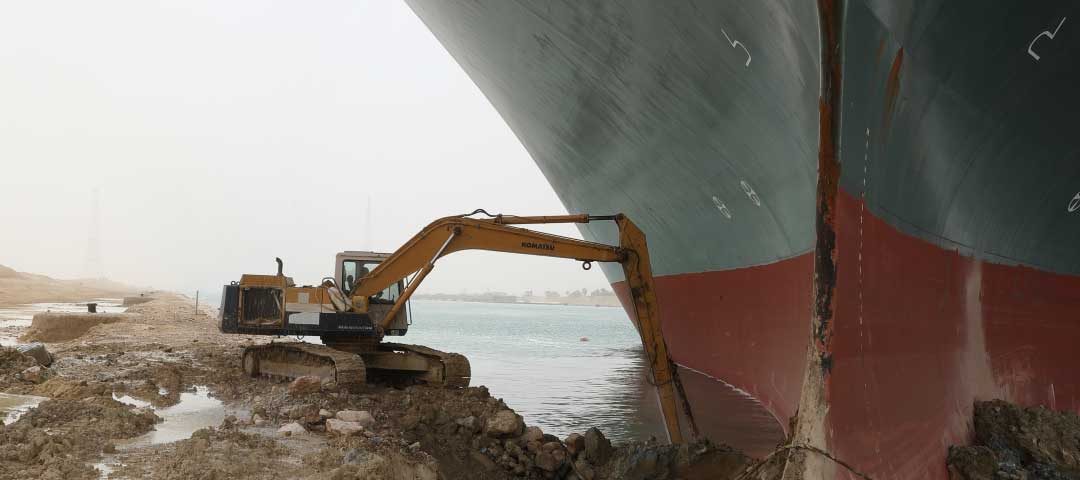The Suez Canal has been in the news a lot recently, with the striking images and reports of the massive container ship stuck crossways midway through the 120mile long canal. But let’s take a look at its history and why the Suez Canal is so critically important to global trade.
Where is it?
The Suez Canal is a waterway that connects the Mediterranean and Red seas through Egypt. Ships traversing the canal travel very close to Israel, Syria, Sudan, Yemen, and Saudi Arabia as they pass from the southeastern edge of the Mediterranean sea through the Red Sea then into the Arabian Sea and the Indian Ocean.
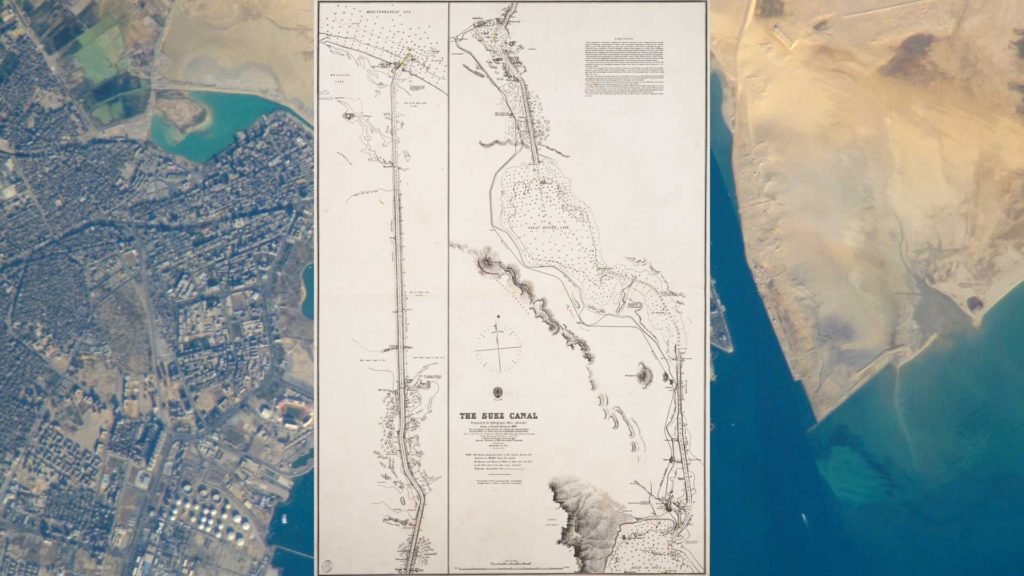
Suez Canal History
The Suez Canal was completed in 1869 after a ten-year period of construction work. An engineering marvel at the time, as construction machinery was much smaller, less efficient, often manual or steam-driven than today’s heavy-duty machinery. The lack of computer-aided design, GPS data, and modern engineering practices make the construction of the Suez Canal very impressive.
Going back thousands of years, there is evidence of an early precursor canal built under ancient Egyptian Kings. One, known as the “canal of the Pharaohs, joined the Nile river with the Red Sea. This canal in particular was actually discovered by Napolean in the late 1700s.
As global trade started to develop between Europe and the far east, the trek that ships had to make below Africa was a very long and perilous journey in the age of wooden sailing ships, but nevertheless formed the backbone of Asian trading routes, and provided immense wealth to shipping companies and governments including Venice.
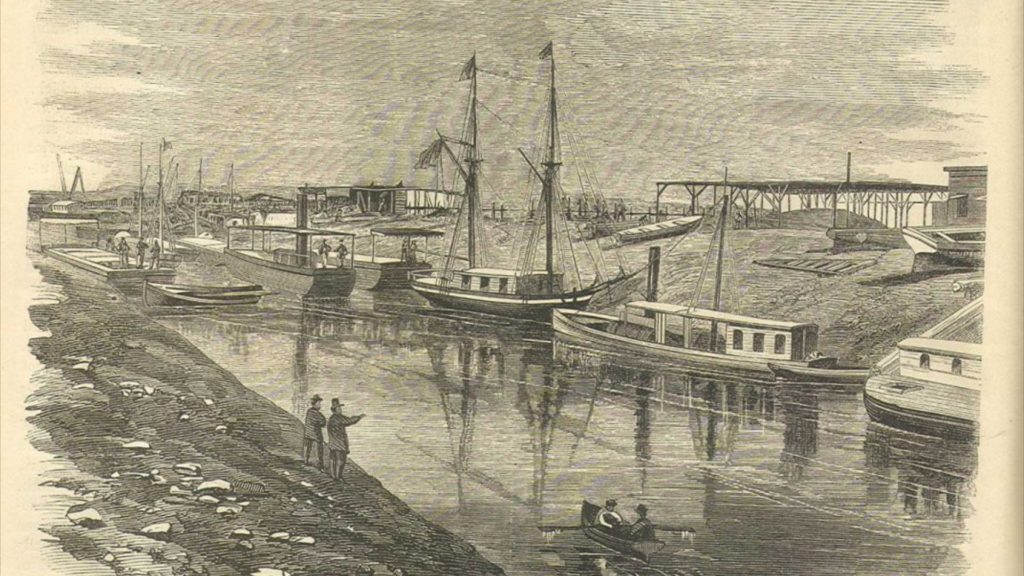
Various governments and leaders wanted a canal in the current location of the Suez Canal but thought that locks would be needed, as they thought the water levels varied between the two seas.
It was the French that ultimately pursued and were able to start construction on the current Suez Canal, advocating for a canal that could be used by any nation. Interestingly enough, the British objected, as their current combination of sea and rail gave them an advantage in European-Asian trade they felt could be threatened by the opening of the Suez Canal.
In 1859 construction started with around 30,000 employed at any one time on the project. Construction was tough on workers, just like the Panama Canal, with many deaths due to disease.
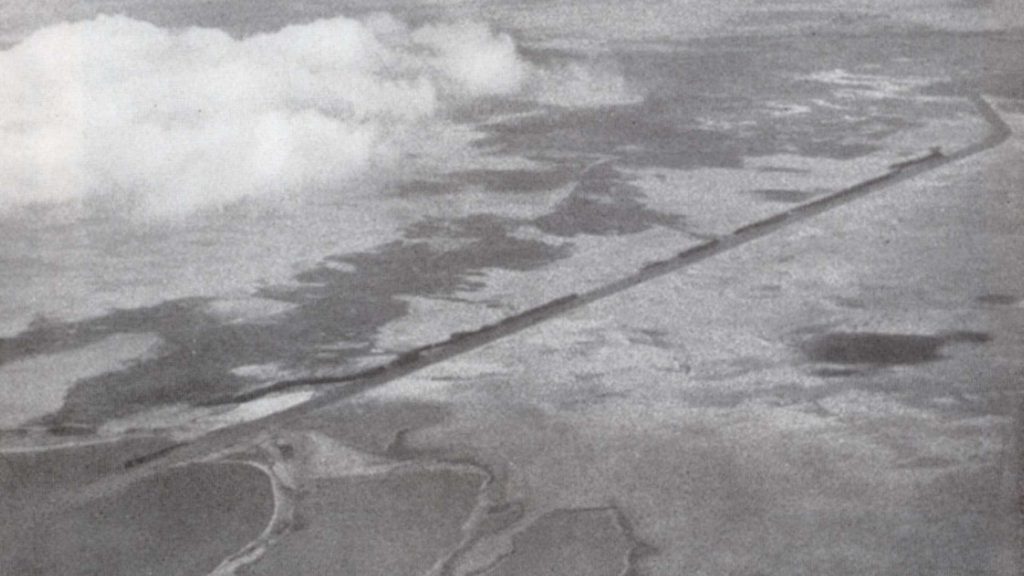
Once completed the canal immediately changed the world and the availability of foreign goods. Naval powers also enjoyed quicker access of their warships and the increased projection of global power the canal produced. The time saved using the Suez Canal varies depending on destination, but in the steamship days, it was often as much as 30 days.
Initially the canal was 25 feet deep and 200 feet wide.
Over the years, political turmoil including armed conflict centered around control over the canal has come and gone, further incremental improvements have modernized the canal and total tonnage gradually increased.
The Suez Canal Today
A major expansion of the Suez Canal commenced in 2014, helping to expand the capacity and number of ships that could traverse the canal in a 24 hr period. Up until this point, the canal was not wide enough for ships to run continuously in opposing directions, which meant that ships had to convoy in a single direction, then stop at certain waiting points that are wider and let other ships pass them.
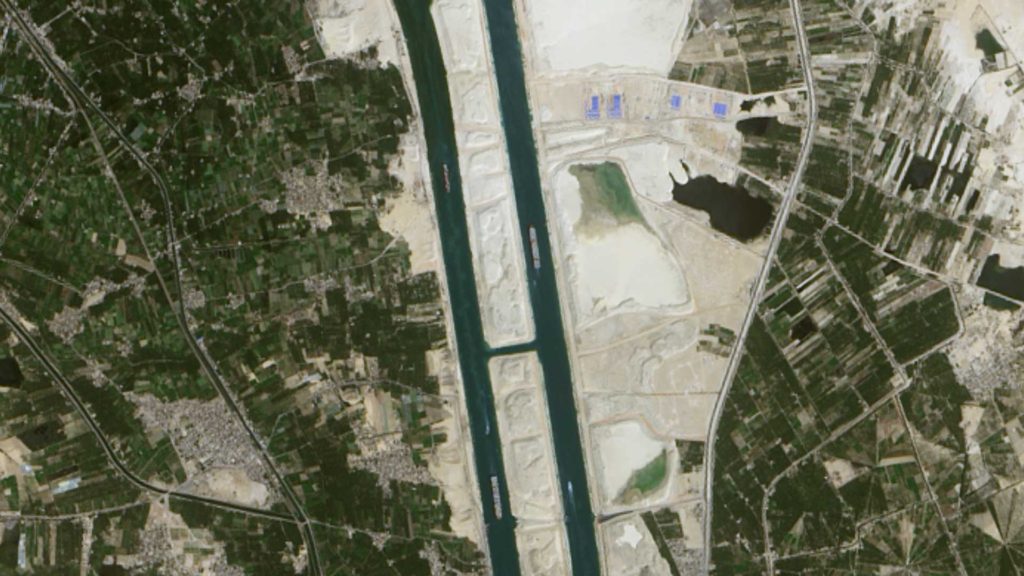
The 2014 modernization program added a little over 20 miles of additional parallel canal, allowing for ships to run in opposing direction for a longer portion of the total canal. Canal transit time with the new system decreased to 11 hours from 18 hours. Total canal capacity is now nearly 100 ships per day. Just like the Panama canal, the system has been widened and deepened over time to allow the increasingly large commercial freighters to pass through it.
Today, the route saves maritime shipping companies around 10 days travel time vs going around Africa, which reduces shipping lag, diesel fuel burned, and emissions. An estimated 10% of total global trade passes through the canal, which speaks to its extreme strategic value. A wide variety of ships use the canal, ranging from tankers to bulk freighters to container ships. Oil is a major commodity that relies on the canal for efficient transport to European and North American markets.
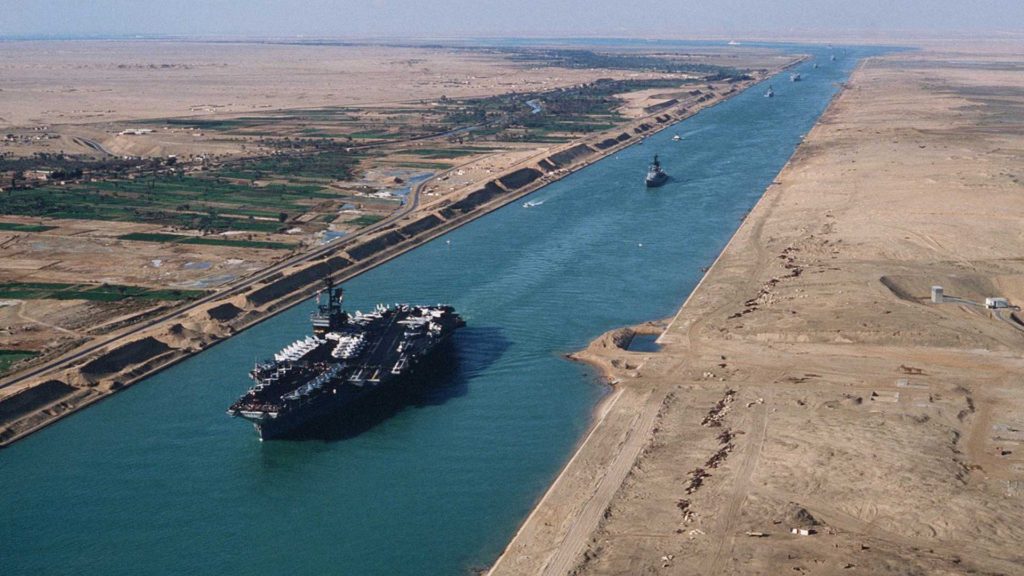
In 2020, around 19,000 ships passed through the canal, moving 1.17 billion tonnes of freight.
The current blocking of the Suez Canal has put immense pressure on maritime shipping firms, with over 300 ships waiting to traverse it. Workers are working as fast they can to pull the stuck ship from the bank, no doubt within the next week, the ship will be freed. Shipping firms are weighing the increased costs and time needed to make the voyage around Africa while the canal is blocked.
Consumers could very possibly feel the effects of the block, as oil prices can rise and consumer products are delayed reaching store shelves.
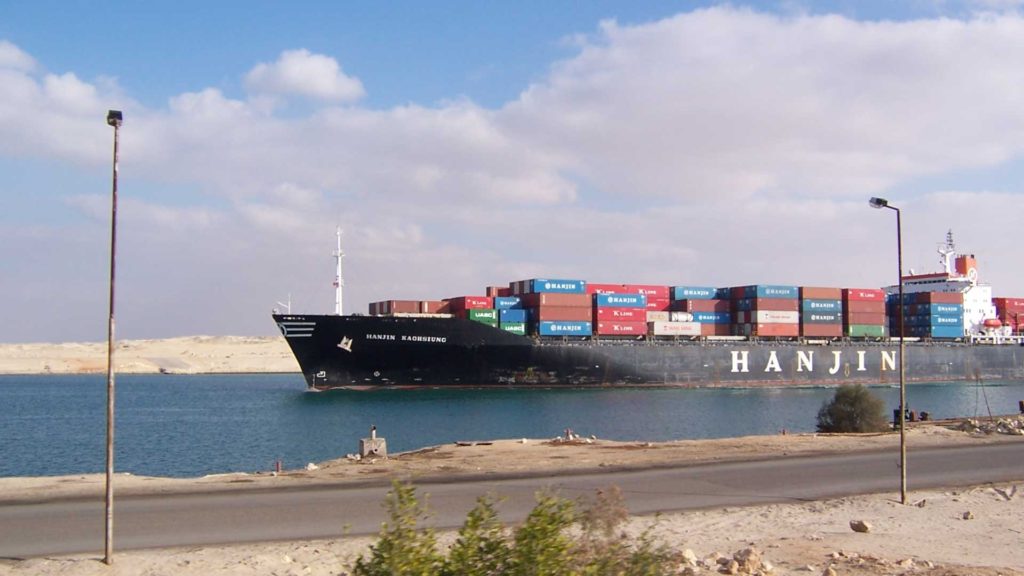
Zmodal is a top intermodal shipping company providing door-to-door intermodal, and full truckload services nationwide throughout our digital supply chain dashboard which provides easy route searching, booking, document management, and analytics. CONTACT US if you want to lower your supply chain costs or want access to North American intermodal capacity.
Recommended for further Reading:
https://www.history.com/this-day-in-history/suez-canal-opens
